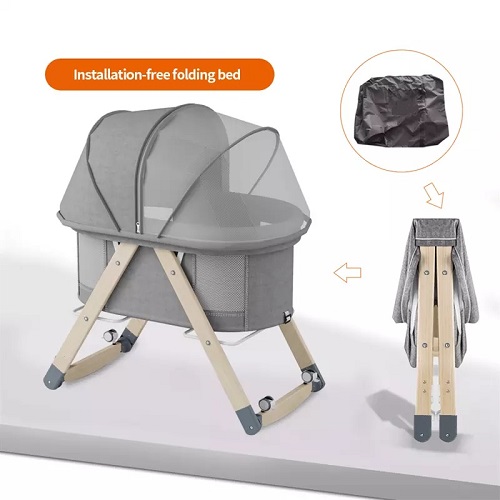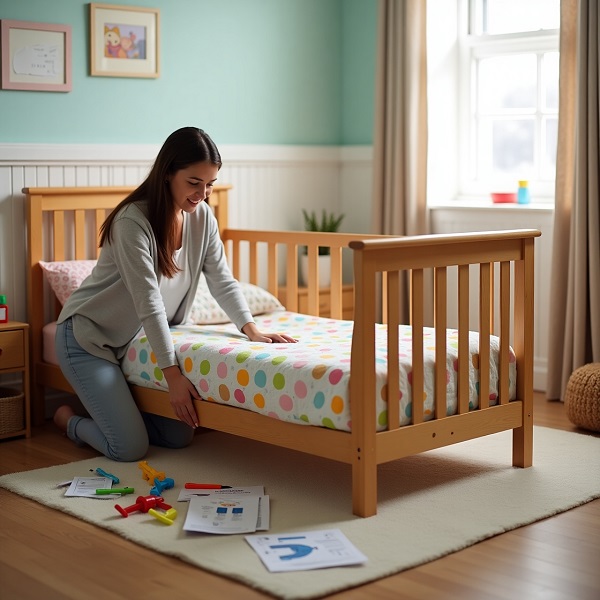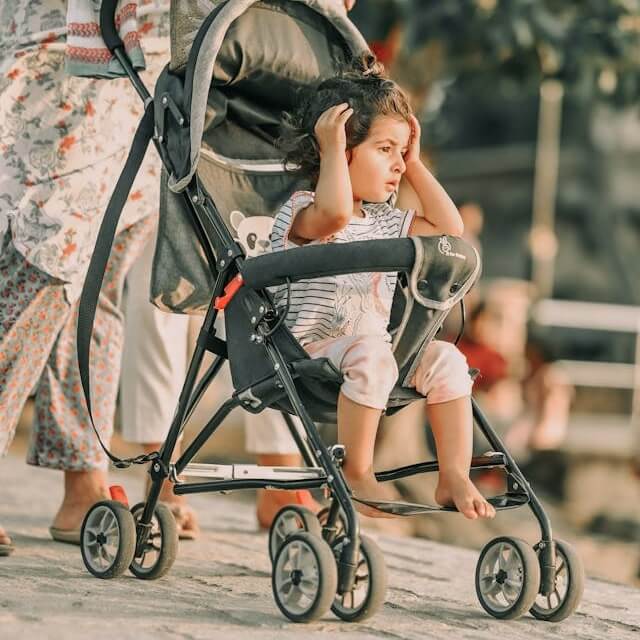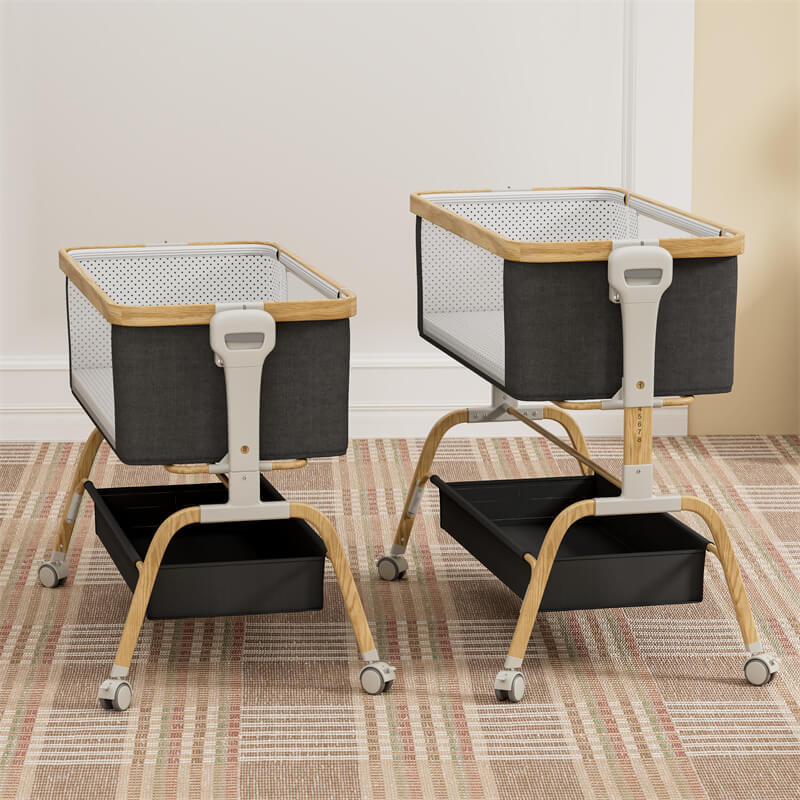Traveling with a baby is exciting but can also feel overwhelming—especially when you want to make sure your little one sleeps safely and comfortably away from home. While many hotels offer cribs, any seasoned parent will tell you that their availability, cleanliness, and safety standards can be a real gamble.
This is where the humble travel bassinet steps in, transforming from a simple piece of baby gear into a veritable passport to peace of mind. Beyond being a portable bed, it offers a familiar, safe, and cozy space for your baby—whether you’re visiting grandparents, enjoying a weekend trip, or traveling across the country.
In this guide, we will explore everything you need to know about travel bassinets—from their safety and recommended use to key features and comparisons with other portable sleep options. By the end, you’ll have a clear understanding of whether a travel bassinet is the right choice for your family’s lifestyle.
What Is a Travel Bassinet?
At its core, a travel bassinet is a lightweight, portable sleeping bed designed specifically for infants, typically from birth until around five or six months of age, or whenever they begin to push up on their hands and knees. Unlike the sturdy, stationary bassinet you might have next to your bed at home, a travel version is engineered for life on the go.
It prioritizes three key elements: portability, a rapid setup, and a compact fold, all while maintaining a firm, safe sleep surface for your baby.
It solves the fundamental problem of infant sleep insecurity away from home. While a hotel might provide a portable crib, it’s often a bulky playard designed for older babies and toddlers. For a newborn, that vast space can feel overwhelming and lacks the cozy, secure feeling of a bassinet.
So, why might you truly need one? The reasons are both practical and profound. First and foremost, it is an investment in safety. It provides a guaranteed, regulated sleep environment that adheres to modern safe-sleep guidelines—something an improvised solution like a padded drawer or a nest of blankets simply cannot offer.
Second—and perhaps most importantly—it’s an investment in your peace of mind. There is an indescribable comfort that comes from knowing, with absolute certainty, that your baby has a safe and comfortable place to sleep, whether you’re visiting relatives for the weekend, embarking on a cross-country road trip, or checking into a beachside villa.
Can My Baby Sleep in a Travel Bassinet Overnight?

When used correctly, a certified travel bassinet is absolutely designed for overnight sleep and is a safe, secure option for your newborn. Its entire purpose is to provide a protected sanctuary for your baby’s slumber, no matter the hour or location.
To understand why, we need to look at the fundamental design principles behind a quality travel bassinet. First and foremost, it provides a firm, flat sleep surface—the cornerstone of infant sleep safety, a standard strongly recommended by pediatric experts worldwide. Unlike a soft hotel pillow or a makeshift arrangement, the mattress in a travel bassinet is engineered to be both comfortable and safe, providing the stable base your baby needs for restorative sleep.
Furthermore, many models feature breathable mesh sides. This is not merely a convenience feature; it is a critical safety element. The mesh allows for continuous air circulation, preventing the buildup of carbon dioxide and ensuring your baby always has access to fresh air. You can also monitor your baby’s gentle breathing without casting a shadow or making any noise.
Therefore, you can safely let your newborn spend the night in it.
How Long Can You Use a Travel Bassinet?
The lifespan of a travel bassinet, much like many early parenting products, is bittersweetly brief but incredibly valuable during its window of use.
Most travel bassinets are designed to accommodate your baby from those first newborn days up until approximately five to six months of age, or whenever your little one reaches a significant developmental milestone. That milestone is typically when your baby begins to push up onto their hands and knees, or starts showing signs of attempting to roll over consistently.
This is a clear sign that it’s time to retire the bassinet—but why exactly? Because this newfound mobility changes everything. The bassinet’s sides, which once offered a cozy embrace, become a potential vaulting point. Even the most secure bassinet is not designed to contain an active infant who might leverage themselves over the edge.
Alongside this developmental cue, you must also strictly adhere to the manufacturer’s specified weight limit. This limit is not a suggestion; it is a critical safety parameter based on the structural integrity of the product. Most travel bassinets support babies up to 15 to 20 pounds, though this can vary.
What Features Should You Look for in a Travel Bassinet?
Weight and Portability: This is often the deciding factor for many parents. A travel bassinet should be lightweight enough to carry effortlessly through airports or easily stow in a car without consuming precious space. Look for models under 10–15 pounds, though some ultra-portable designs weigh even less. Equally important is how compactly it folds. Does it fit in an overhead bin, or will it need to be checked?
Ease of Setup and Takedown: After a long journey, the last thing you want is a complicated assembly process. Top travel bassinets include intuitive, quick-fold mechanisms, often allowing you to set up or collapse the bassinet in just one or two simple motions.
Mattress Quality and Firmness: A firm, flat mattress is non-negotiable for safe infant sleep. Steer clear of bassinets with excessively soft or heavily padded surfaces, since these can increase the risk of suffocation. If the mattress feels too thin or insubstantial, it may not provide adequate support or comfort for prolonged sleep.
Additional Practical Features: For instance, a removable, machine-washable mattress cover makes cleaning up spills or accidents much easier. Some bassinets include storage pockets for keeping pacifiers, diapers, or wipes within easy reach. Others feature a rocking option or can be attached to compatible strollers for seamless transitions during outings.
Comfort and Stability: A well-designed bassinet will provide a cozy, secure environment that helps soothe your baby to sleep. Test the bassinet’s stability on a flat surface to ensure it doesn’t wobble or shift easily.
What Are the Best Types of Travel Bassinets?

Standalone Portable Bassinets: One of the most common and versatile designs is the standalone portable bassinet. These models often feature a simple, foldable frame with a soft yet firm mattress and breathable mesh walls. They are self-sufficient, sitting securely on the floor, and can be moved from room to room with ease. It closely mirrors the experience of a standard bassinet, offering both comfort and familiarity.
In-Bed Bassinets: For parents who practice safe co-sleeping, the in-bed bassinet offers a uniquely reassuring solution. These compact, lightweight designs are intended to rest securely on an adult bed, creating a protected micro-environment for your baby right beside you.
Playard with Bassinet: Some travel bassinets are designed to serve multiple purposes, such as combining a bassinet with a portable playard or a changing station. These models are slightly bulkier but offer extended usability as your baby grows. They may also include features like removable rocking stands or canopies for shaded naps outdoors.
Ultra-Compact and Inflatable Models: Inflatable options, crafted from durable, non-toxic materials, can be deflated and packed into a bag small enough to fit into a carry-on suitcase. While they may seem unconventional, many are thoughtfully designed with firm bases and breathable mesh to ensure safety and comfort.
Bassinet Attachments for Travel Systems: Some travel bassinets integrate seamlessly with existing travel systems, such as compatible stroller frames. These models allow the bassinet to function both as a mobile sleep space during outings and a stationary bed once you’ve reached your destination.
Travel Bassinet Vs Travel Crib: What’s the Difference?
At the most fundamental level, the difference lies in the stage of infancy they serve. Travel bassinets are designed for a baby’s first months, generally from birth up to around five or six months. In contrast, a travel crib is built for longevity. It accommodates older infants and toddlers, often supporting children up to two or three years of age, depending on the model.
This distinction in purpose informs their design and structure. A travel bassinet prioritizes lightweight portability and simplicity. These models typically have a soft, low-profile frame and a minimalist design that folds compactly, making them perfect for families on the go. Travel cribs remain portable but are usually heavier and bulkier when folded, reflecting their sturdier construction.
Another key distinction is found in their functionality and features. Travel bassinets are designed almost exclusively for sleep. They focus on providing a safe, comfortable, and easily accessible space for your baby to rest. Travel cribs often offer additional functionalities, such as convertible designs that include built-in changing stations, storage pockets, or attachments for canopies and mobiles.
Are Travel Bassinets Allowed on Airplanes?
The prospect of air travel with an infant can feel daunting, and questions about what you can and cannot bring on board are entirely understandable.
When it comes to travel bassinets, the answer is nuanced but generally reassuring: yes, travel bassinets are often allowed on airplanes, but how they are accommodated depends largely on their size, the airline’s policies, and whether you’ve secured an appropriate space for their use.
Most airlines permit passengers to bring a travel bassinet onboard if it folds compactly enough to fit in the overhead bin or under the seat in front of you. This is where the ultra-portable, lightweight design of many travel bassinets becomes a significant advantage.
Some airlines offer an additional convenience: bassinets provided for use during the flight, often referred to as “sky cots” or “airline bassinets.” These are specially designed bassinets that attach to the bulkhead wall in certain rows, typically in the front of the cabin or near emergency exits. They are available on a first-come, first-served basis and are intended for use during cruising altitude when the seatbelt sign is off.
If your travel bassinet does not fit in the carry-on storage spaces, it will likely need to be checked as baggage. Many airlines allow passengers traveling with infants to check certain items, like strollers and car seats, for free at the gate or ticket counter.
A critical safety point must be emphasized: even if a travel bassinet is brought onboard, it cannot be used during takeoff, turbulence, or landing. During these phases of the flight, your baby must be securely held on your lap in an approved infant seatbelt or placed in their own purchased seat in a certified car seat.
Conclusion
Traveling with a baby doesn’t have to be stressful, and a travel bassinet can make a significant difference in both your child’s comfort and your peace of mind. By providing a safe and familiar sleep environment, you can help your baby maintain routines even when you’re far from home, reducing fussiness and sleepless nights. The right travel bassinet combines portability, stability, and thoughtful features, allowing parents to focus on enjoying the journey rather than worrying about where their little one will sleep.
While travel cribs offer more space and longer-term usability, a travel bassinet remains the go-to option for newborns and young infants, especially for short trips or situations where convenience and easy setup are key.
Recommended Related Articles:
- Co-Sleeper vs Bassinet: Which Is Right for Your Baby?
- What To Do If a Newborn Won’t Sleep In Their Bassinet?
- Best Bassinet for Small Spaces: A Complete Guide
- What Is a Moses Basket? A Guide for Parents
- Rocking Bassinet for Newborns: A Complete Guide
- Is a Bassinet Better Than a Crib for Newborns?
- Bedside Bassinets: What You Need to Know
- Top 15 Bassinet Manufacturers in China












